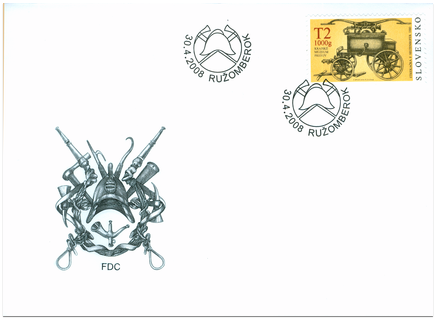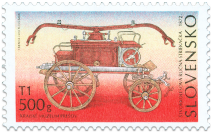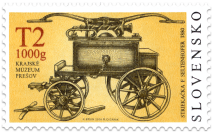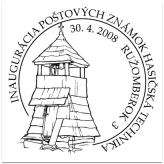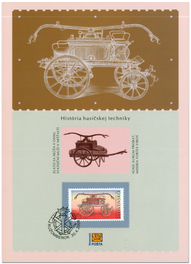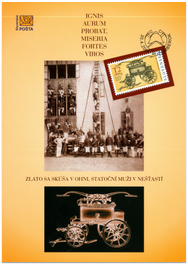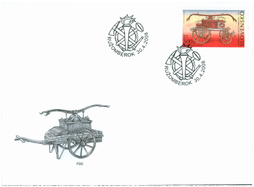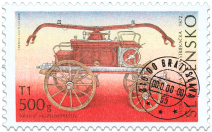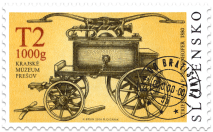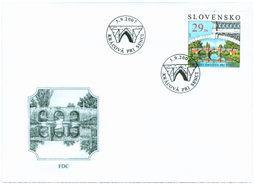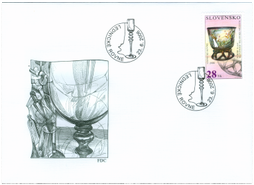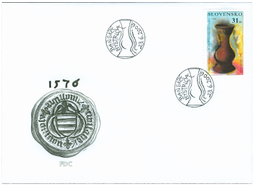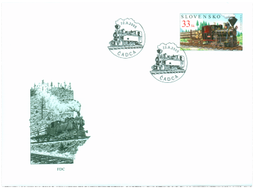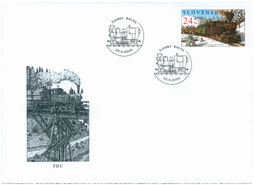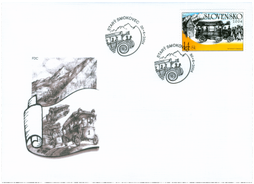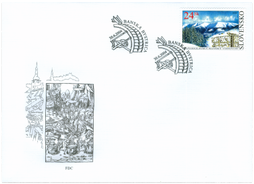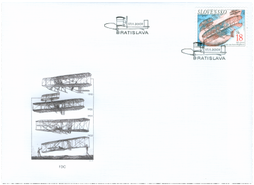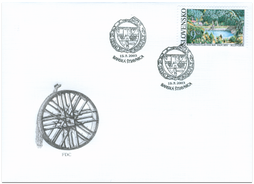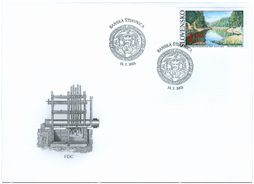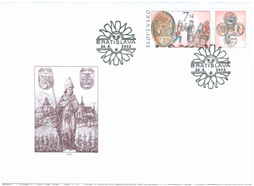FDC 421 Date of issue
30.04.2008 Sell price
1.20 €
T2 1000 g responds to the rate of postage of the 2nd class up to 1000 g - domestic servis. © Slovak Post, 2008 In addition to being manually pulled, the hose-cart was also adapted for being pulled by horses. It has an iron water tank on top of the deck, as well as a forged two-arm control lever, a nozzle system, and a tool-box. Operated by six personnel, it could discharge 140 – 160 litres per minute within the range of 24 – 26 metres. The oldest factory for the production of this fire-fighting equipment was founded in 1816 in Sopron (Ödenburg), Hungary, by the Seltenhofer family dynasty. All four generations of this family (all of their males being named Friedrich) managed to maintain their business until the end of World War II. Their success lay in sound technical and manufacturing quality, high production volumes, low prices, and customer-friendly repayment schemes for municipalities and associations. Their products were highly competitive even globally, mainly due to their high manufacturing precision. As early as 1869 the factory was awarded with the title ‘Imperial and Royal Court Supplier’. Moreover, the emperor Franz Joseph awarded the company a ‘Gold Cross of Merit with Crown and Knight’s Cross’. The company’s catalogue dating to the 1890s offered a broad range of products and featured 36 fire-fighting devices. According to the company’s records, by 1897 the factory had produced as many as 4071 devices. Subsequently, the company founded an office in Budapest to penetrate the new territories within the former Austria-Hungary. The company constructed its own mobile pumper, had it patented, was able to take advantage of the latest technological advances and applied such advances in the construction of the cart chassis. The originally wooden material used in their construction was replaced by forged iron, while the water tanks were made from Steyr sheet metal, and the cylinders from the finest bronze. All compression outlets of pumpers were furnished by threads, as prescribed by the Hungarian Threading Standard. Hose-carts with cylinders of up to 100 mm in diameter had copper air and vacuum chambers. The hose-carts were also equipped with intake hoses, hemp hoses, and copper nozzles, as well as keys, hammers, oil mugs, etc. Blahoslav Lazorík
Show lessSimilar products
FDC 420 Date of issue
30.04.2008
FDC 406 Date of issue
05.09.2007
FDC 381 Date of issue
23.06.2006
FDC 382 Date of issue
23.06.2006
FDC 363 Date of issue
22.09.2005
FDC 362 Date of issue
22.09.2005
FDC 331 Date of issue
30.06.2004
FDC 332 Date of issue
30.06.2004
FDC 312 Date of issue
17.11.2003
FDC 304 Date of issue
15.07.2003
FDC 305 Date of issue
15.07.2003
FDC 265 Date of issue
24.06.2002
© 2024 POFIS - Postal philatelic service. All rights reserved

